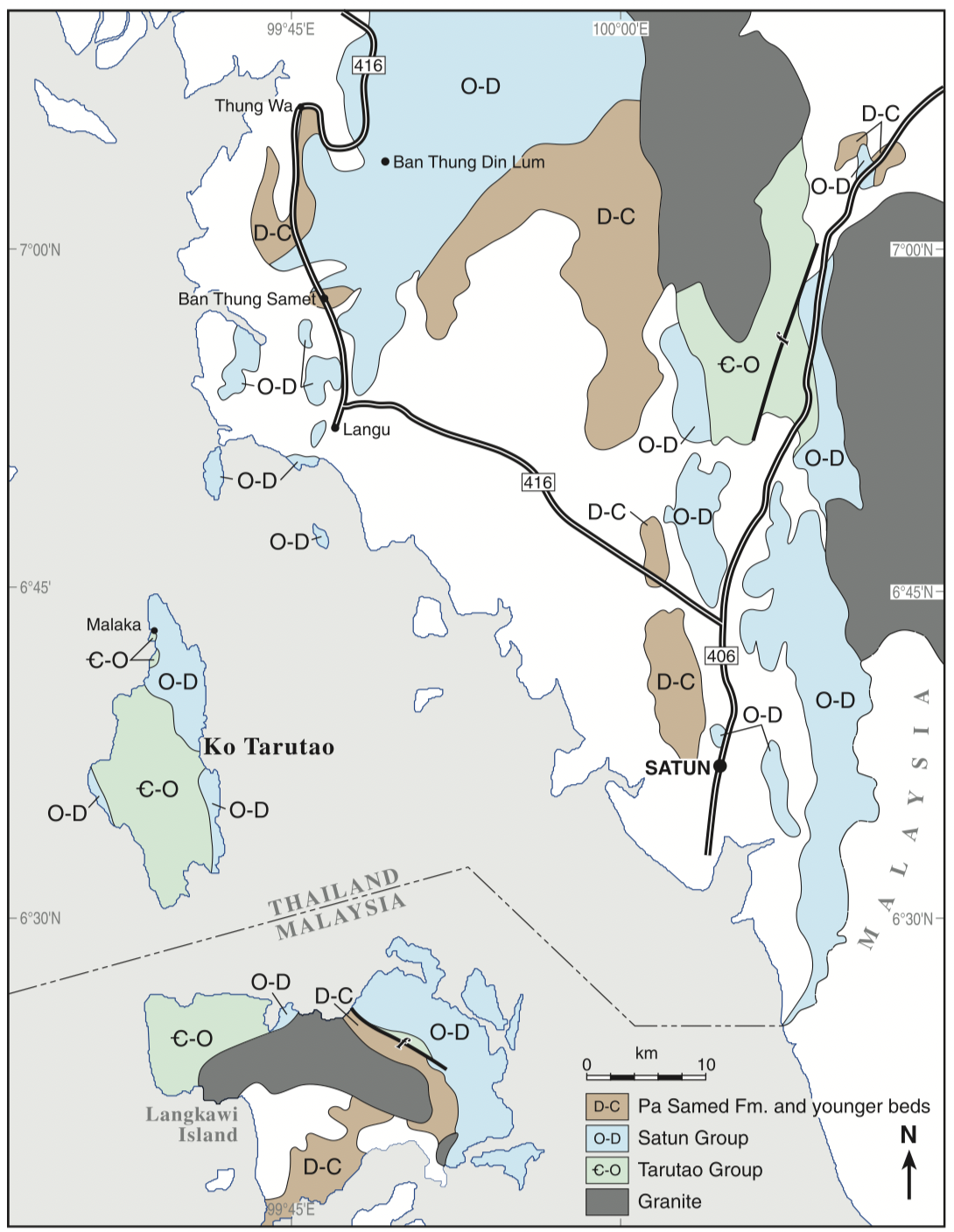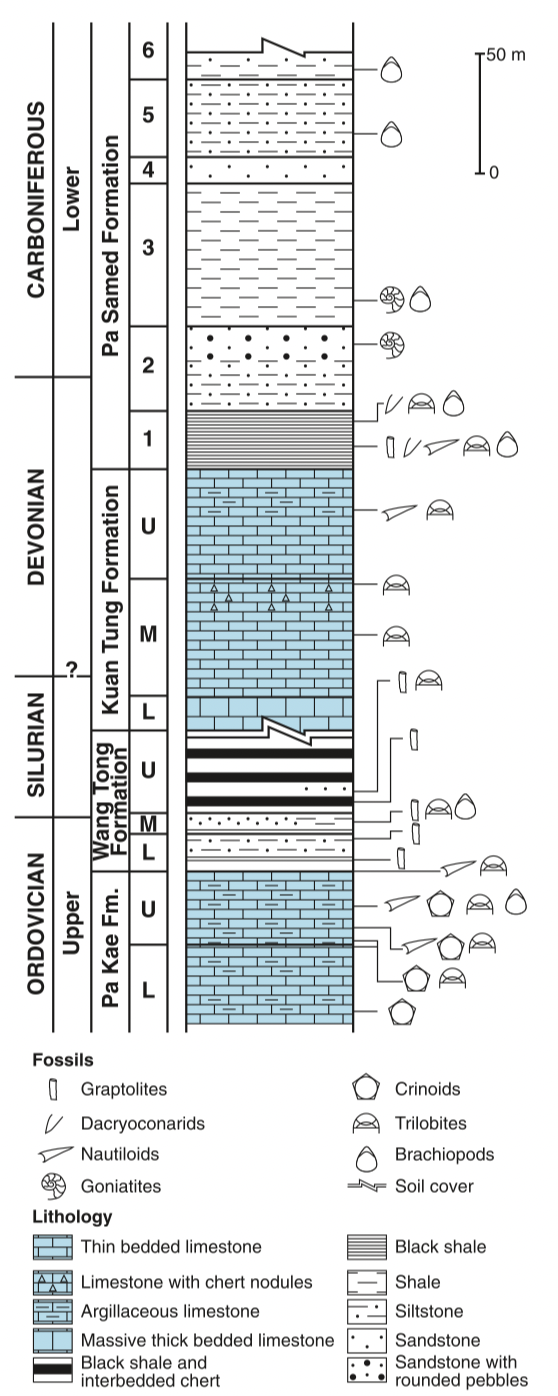Kuan Tung Fm
Period:
Silurian, Devonian
Age Interval:
latest Silurian–Early Devonian (3)
Province:
Sibumasu: Lower Peninsula
Type Locality and Naming
Named after a small limestone hill’s name, between Km post 7-10 Langu- Thung Wa road by Wongwanich et al. (1990). Parent unit: Middle formation of the Thong Pha Phum Gr (Wongwanich, 1990), but Ridd (2011) assigned as uppermost unit of the Satun Gr.
[Figure: Sketch geological map (from various sources) of the southern part of Peninsular Thailand and Langkawi Island of Malaysia. Note that Thai stratigraphic nomenclature has been extended to Langkawi Island (Ridd. 2011)]
Synonym: แบบควนตุง
Lithology and Thickness
Lower member of this carbonate formation is 15 m thick, massively bedded, grey to brownish grey calcisiltite limestone with thin argillaceous layers. Middle member, 44 m thick, consists of pink to red and grey calcisiltite limestone with fossils and minor calcarenites with fine argillaceous layers, 10–50 thick beds and some chert nodules. Upper member, 46 m thick, is red, well-bedded micrite limestone, interbedded with thin, reddish brown argillaceous layers and small algal polygons of deeper-water stromatolites on the top of the beds. This red stromatolitic limestone is very similar to that of the underlying Pa Kae Fm, interpreted as a shallow-water to deep-pelagic base-of-slope deposit (Wongwanich & Boucot, 2011). Thickness: Total thickness is 105 m
[Figure: Composite stratigraphic section of the Upper Ordovician to Carboniferous near Ban Thung Samet, between Km 10 and Km 11 on the Langu to Thung Wa road in Satun Province. From Ridd (2011), which is modified after Wongwanich et al. 2002).]
Lithology Pattern:
Limestone
Relationships and Distribution
Lower contact
Wang Tong Fm (unconformable)
Upper contact
Pa Samed Fm (conformable)
Regional extent
Lower Peninsula. Correlation: Upper Setul Limestone Fm on Langkawi island, Malaysia.
GeoJSON
{"type":"Feature","geometry":{"type":"MultiPolygon","coordinates":[[[[99.37,9.2],[99.66,9.37],[99.89,9.32],[100.16,8.78],[100.39,7.93],[100.58,6.98],[100.57,6.39],[100.32,6.3],[99.81,6.7],[99.24,7.45],[98.82,8.18],[99.08,8.51],[99.37,9.2]]]]}}
Fossils
Emsian trilobites (Fortey 1989; see Boucot et al. 1999 for age modification) and the Early Devonian conodonts (Long & Burrett 1989a) Pandorinella steinhornensis and Pseudoenotodus kuantungensis from grey limestone in the upper part of the middle member 6 (Wongwanich & Boucot, 2011). Deeper-water stromatolites.
Age
Ridd (2011; Fig. 3.3) implies spans Pridoli to late-Early Devonian.
Age Span:
Beginning stage:
Pridoli
Fraction up in beginning stage:
0.0
Beginning date (Ma):
422.96
Ending stage:
Emsian
Fraction up in the ending stage:
0.0
Ending date (Ma):
407.57
Depositional setting
Shallow to deep-pelagic deposit
Depositional pattern:
Additional Information
Compiler:
Wen Du - modified from Wangwanich & Boucot, 2011, Chapter 4 Devonian and from Ridd. M.F., 2011, Chapter 3 Lower Palaeozoic; both in: Ridd, M.F., Barber, A.J., and Grow, M.J., editors, The Geology of Thailand, Geol. Soc. of London.
Lexicon of Stratigraphic Names of Thailand of 2013.
Lexicon of Stratigraphic Names of Thailand of 2013.

